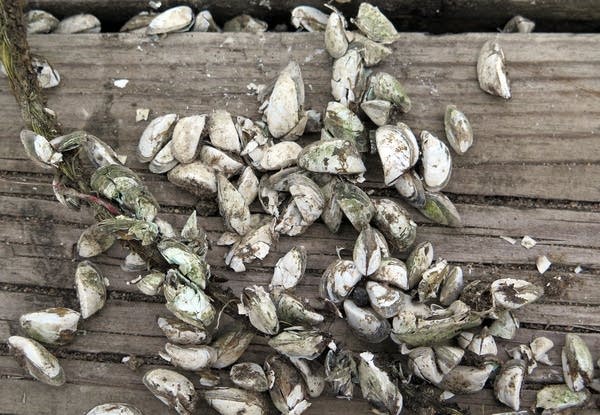5 things you should know about aquatic invasive species

Zebra mussel shells covered a dock on Lake Mille Lacs.
Dan Kraker | MPR News file
Go Deeper.
Create an account or log in to save stories.
Like this?
Thanks for liking this story! We have added it to a list of your favorite stories.


